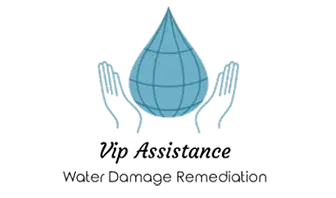HOW DO YOU KNOW IF YOU HAVE A MOLD PROBLEM?
Inspecting for a mold problem is the first step to getting rid of it.
Even though it might sound a little far-fetched and confusing, the cleanest places can also have mold! Most people associate mold with a grimy matter that can only occur due to uncleanliness and dirt, but that is not entirely true. Even if you are a conscientious homeowner who keeps their home sparkling clean, there could still be mold hiding somewhere.
The question, however, is how do you check if your building is infested with mold? What you can do is look for areas where the conditions are right for mold to be growing.
Here are some of the critical conditions for mold growth:
High Moisture Levels
Mold thrives in areas where there is excess water, either physically resting in materials or as humidity in the air. By reducing the moisture levels in your home, you can decrease the chances of developing mold. Although it sounds complex, it is straightforward to bring down the humidity and moisture levels in a home with the help of ventilation and to make use of humidifiers.
Since the optimal conditions for mold growth are a higher (warmer) temperature and lack of ventilation, both should be avoided. There are multiple ways that you can improve your home’s ventilation:
- Make sure your exhaust fans are properly vented and in good repair. Use them when the house is stuffy and warm to have proper air ventilation.
- Take a professional’s help and make sure you know your house’s moisture levels. Buy a dehumidifier according to these levels, if necessary.
- Open your windows and doors for natural air to come in and make your residence breathable and unsusceptible to mold.
Flooding of Building
If your building has recently been flooded, there is a strong chance that it will develop mold. To stop mold growth after your home floods, you must take adequate measures and ensure that there is no water or moisture left in your house, which can serve as a breeding ground for the mold.
Lack of Home Maintenance
The most common cause of household mold is the lack of maintenance of the building. There are many signs that one can look out for while checking for decay. There may be water stains, a musty smell, or cracks in walls and wallpaper. These may occur due to the leakage or drainage of pipes that are not immediately accessible. One must call a professional to look at these leaks and fix them before the mold situation grows out of hand.
HOW DOES MOLD SPREAD THROUGHOUT YOUR HOUSE?
People can get confused when figuring out if they have a mold problem or just some regular house issues. However, it is pretty easy to figure out if you have mold spreading in your house.
There are sure signs and symptoms that you can look out for to ascertain if your house is infested with mold.
All you need to do is look for the following signs:
- Cracked wallpaper
- The musty and dense smell
- Excessive moisture in the house
- Fungus present on furniture
- Stale and contaminated rugs and carpets
- Spotted clothing items and other places
- Orange grimy substance on drains and sinks.
Health issues associated with the presence of mold:
You can also determine if your house has a mold problem by looking at your family’s health condition. If you or your family is facing any of these health issues, it might indicate the presence of mold in your house.
- Irritation of the eyes, nose, and throat
- Lung damage (can be caused by long-term exposure)
- Fever-like symptoms
- Excessive sneezing and coughing
- Watery eyes and runny nose.
WHAT CAN YOU DO IF YOU SUSPECT MOLD IN YOUR HOUSE?
Here is what you can do if you suspect mold in your house:
Consider professional mold testing
To save you time, money, and energy, call professionals as they can provide full evidence of mold in your house and the complete picture of mold infestation along with a solution to it.
It is true that there are other alternatives, such as purchasing a mold testing kit, but the truth is that these kits can be uninformative at best, as they can only indicate the presence of mold, but not the mold type, amount, or places where mold is growing and other such factors.
Here is a list of places to check for mold in your house:
- Under flooded carpets that may have moisture trapped under them
- Behind refrigerators or cupboards
- Below drains and sinks that have not been repaired for a long time
- Behind ceiling tiles and floorboards
- Behind walls containing pipes and water lines.
Call professionals for help:
Whether you merely suspect mold or know it’s a problem for sure, consider calling professionals to help with eradicating mold growth and nipping the problem in the bud. Mold growth can be a little hard to get rid of, but by taking the proper steps, you will be able to do it in no time!
If you think performing mold remediation is a hard thing for you to do, call on a professional team to take care of it for you.
HOW CAN YOU PREVENT FUTURE MOLD GROWTH IN YOUR HOUSE?
After you hire mold remediation professionals, you want to make sure that the mold won’t come back. There are specific ways to help make your home less hospitable to mold growth.
- When areas get wet, dry them.
- Improve ventilation to get fresh air in your home.
- Locate leaks and fix them.
- Make sure to address any issues with increased relative humidity indoors.
- Have proper and professional plumbing in your house.
WHEN MOLD REMEDIATION IS NECESSARY
CLEAN, KILL, OR REMEDIATE: HOW TO GET RID OF MOLD FOR ONCE & FOR ALL
